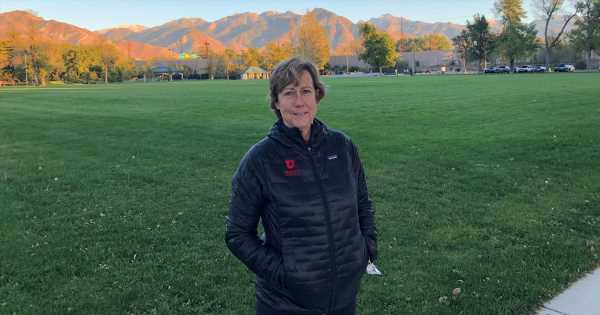Photo: Donna Roach
The healthcare industry is emerging from the COVID-19 pandemic into a world that demands health equity.
In times of major transition – enabled by the onset of leapfrogging technologies and/or seismic shifts in culture – information is vital to re-establish and reinvent best practices. But data alone does not equal information.
Health IT leaders must keep the end user in mind as they seek to help physicians and healthcare teams do their jobs better.
Donna M. Roach is CIO at University of Utah Health. With an annual budget of $4.3 billion (FY20), U of U Health is a highly advanced university health system. The faculty practice and students learn among 16 hospitals and community clinics; a 1,400-member University of Utah Medical Group; a highly ranked, $408M (FY20) research enterprise encompassing six schools and colleges; and a 200,000-member health plan.
Roach will be discussing health equity, healthcare data capture and more in her HIMSS22 education session entitled “Data Information: Delivering Value to Inundated Providers.” Healthcare IT News interviewed Roach to get an advance look at her presentation.
Q. In general, what has been the evolution of early approaches to capturing healthcare information?
A. Early on in my career, the focus for capturing healthcare information was on creating an accurate bill for the patient and staying in compliance with the insurer, including the government programs such as Medicare and Medicaid. The outcome of this became a heavy back-office function and systems for data collection automation centered on the billing cycle.
Healthcare information that could improve the patient outcome and lead to improving the overall health and wellbeing is still evolving today in the form of the electronic health record.
Improvement in the EHR began to focus on clinical data collection and applying standards to the overall clinical workflow. Data collection was focused on nursing documentation and the overall medical records, which has now evolved into health information management. Some clinical departments excelled in data collection, such as radiology, where DICOM standards evolved around image management.
In January 2009, the Health Information Technology for Economic and Clinical Health Act (HITECH) infused $30 billion into an effort to transform the use of EHR technology and bring an emphasis on greater data collection with a base level of EHR functionality across the U.S. healthcare system.
In 2022, we are still evolving in our capture of healthcare information with many factors influencing the variety of approaches.
Q. What has the transition from data collection to information aggregation been like?
A. In many ways, the transition from data collection to information aggregation is still underway today. Clinical workflow struggles with standardization, which is foundational to aggregation.
As John Glaser notes, “Fragmentation of the healthcare delivery industry allowed each hospital and physician to practice medicine in their own way, which encouraged customization of the EHR systems.” This has resulted in EHRs that contribute to data collection in their own hospitals or practices. But when coordination is needed across the population or community, we are lacking.
This is evident in how we have approached an overall view into the current COVID-19 pandemic. Infection, vaccination and mortality rates can be viewed by each hospital or health system, which is an outcome of the current EHR.
If your current EHR can collect discreet clinical outcomes and track to a patient level, these rates are easily aggregated. However, when needing to view the overall outcomes at the community, state, region and country levels, we have struggled with aggregation based on the lack of standardization, data timing and reporting tools, to name a few.
Q. What have been some of the innovations and value of information delivery in the clinical setting?
A. In my health system, we have seen several levels of innovation that have benefitted the patient, provider and community.
Our enterprise data warehouse (EDW) has been in place for more than 20 years, and many lessons have been gained by such an extensive EDW strategy for data aggregation, care coordination and research.
Early in the pandemic, we were able to quickly pivot and provide a view into infection rates across the care settings and assist with mobile testing and vaccination clinics. This effort continues to evolve throughout our system.
Our patient portal, which is provided through Epic, is a constant source of innovation and improvement in providing healthcare information to the patient while allowing streamlined virtual visits and follow-up care.
Currently, we have more than 750,000 active accounts, which demonstrates a 70% adoption rate. Placing healthcare information in the hands of our patients empowers them to play a more active role in their care.
The University of Utah Health is the only academic medical center in a five-state region. By offering clinical outreach to smaller community hospitals through a program called Project ECHO (Extension for Community Health-Care Outcomes), we have a cost-free partnership between community providers and a University of Utah Health interdisciplinary team of professionals, developed to treat chronic and complex disease in rural and underserved areas using technology.
Roach’s HIMSS22 session, “Data Information: Delivering Value to Inundated Providers,” will take place on Tuesday March 15 from Noon to 1 p.m. at the Orange County Convention Center in room W330A.
Twitter: @SiwickiHealthIT
Email the writer: [email protected]
Healthcare IT News is a HIMSS Media publication.
Source: Read Full Article
